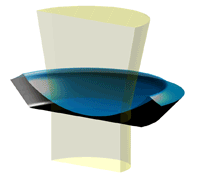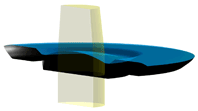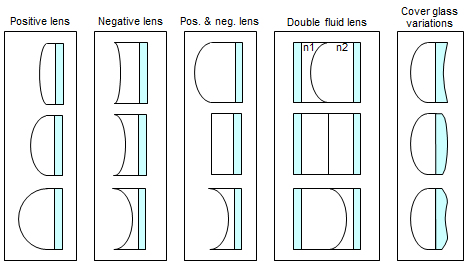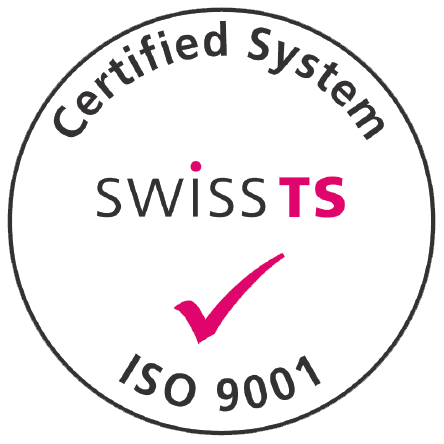Introduction
Traditional optics are based on solid glass or plastic lenses, which are moved back and forth to focus or zoom. A very old but successful system, however, is completely different: the eye! It consists of an elastic lens material, which is bent in order to focus. Optotune has developed and patented a series of lenses that basically copy the principle of the eye.

Working principle
Optotune’s focus tunable lenses are shape-changing lenses based on a combination of optical fluids and a polymer membrane. The core element consists of a container, which is filled with an optical liquid and sealed off with a thin, elastic polymer membrane. A circular ring that pushes onto the center of the membrane shapes the tunable lens. The deflection of the membrane and with that the radius of the lens can be changed by pushing the ring towards the membrane or by exerting a pressure to the outer part of the membrane or by pumping liquid into or out of the container.
 |
Working principle of Optotune’s manual lens ML-20-35, which achieves a lens shape ranging from concave to flat to convex. The ring that forms the lens is pushed towards the container, thus filling the lens with liquid
|
 |
Working principle of Optotune’s electrical lens EL-10-30. In this case, the lens-shaper ring remains in place relative to the container. The only movement is a ring that pushes down on the membrane in the outer part of the lens with increasing current, thus pumping the liquid into the center of the lens.
|

Advantages
A change in lens radius of several micrometers can have the same optical effect as moving the entire lens several centimeters. Optical systems can be designed more compact, oftentimes with less lenses and usually with less or no translational movement. Accordingly, there is no more need for expensive mechanical actuators. Less movement also leads to a more robust design, which can be completely closed so that no dust can enter. Furthermore, the materials employed are lighter than glass, saving overall weight. Less movement and weight also means less power consumption and that the response time of systems with tunable lenses can be very low, in the order of milliseconds. Another advantage becomes obvious during production. The fact that less optical parts are moved combined with the tunability of the radius during operation results in reduced tolerance sensitivity and thus higher yield rates.
To summarize, these are the five main advantages of focus tunable lenses over traditional optics:
- Compact design
- Less mechanics
- Fast response
- Low power
- Less tolerance sensitivity









